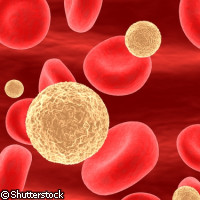Tiny holes in the wall let in tumour cell killers
A study published in the Proceedings of the National Academy of Sciences has clarified the mechanism by which granzymes enter and destroy infected cells. The findings open the door for future research into granzyme-based cancer and chronic virus infection therapies. T-cells and natural killer (NK) cells specialise in finding virus- and cancer-infected body cells. These cells produce granzymes, special immune system enzymes that are able to cause infected cells to commit suicide. When an infected cell is identified, granzymes are somehow smuggled in through the cell wall. Once inside, they induce apoptosis, or self-destruction of the infected cell. Scientists have long sought to define the mechanism by which granzymes gain entry to these infected cells, and have proposed two possible models. In one model, granzymes (GzmB) are ferried across the cell wall. In order to do this, they must bind to cell-surface heparan sulfate (HS). This membrane-transport theory is well supported; however, HS binding in GzmB has been seen to cause undesirable side effects. An alternative mechanism would be essential for pursuing GzmB therapies in living creatures. In the second model, GzmB is smuggled in through the holes in the cell wall that are created by a molecule called perforin during killer cell attack. The pores created by perforin are so tiny and are open for such a short time that scientists have for the most part favoured the membrane-transport model. Granzymes can damage healthy cells when they enter via membrane transport. However, they could not accumulate in healthy cells if they are only able to enter via the pores opened by the perforin secreted by T-cells or NK cells. Scientists at the Max Planck Institute of Neurobiology in Germany found evidence to support the pore-entry model using a variant of GzmB that does not bind to HS and is, therefore, unable to achieve membrane transport. Despite this restriction, Dr Dieter Jenne explains that 'the attacker cells were observed to be no less effective [...] We were also able to show that the pores are large enough to allow enough granzymes into the cell before the holes are resealed.' The study significantly widens the perspective on granzyme-based therapeutics. Dr Florian Kurschus explained, 'The exciting thing about these results is not only that we have finally managed to answer a long-standing question, but that our granzyme variations, together with the knowledge that the membrane holes are the most important means of entry into the cell, can lead to improved therapeutic methods in the fight against viruses and cancer.'
Countries
Germany



